Creative Adaptations of Jeonju Bibimbap : Bibim-bbang, Bibimbap Croquette, and Bibimbap Waffle

Jeonju Bibimbap is one of the most popular Korean traditional food among tourists. Nowadays in Jeonju, a member city of UNESCO Creative Cities Network for food, you will find out that Bibimbap has transformed into creative finger foods.
Aren’t you curious how Jeonju Bibimbap turned into a variety of finger foods?
In this post, I will introduce you to Cup Bibimbap, Bibimbap Croquette, Bibimbap Waffle, and Cheese Bibim-bbang (‘bbang’ means ‘bread’ in Korean).
1. “Cup Bibimbap” from Mix Bob in Jeonju Hanok Village
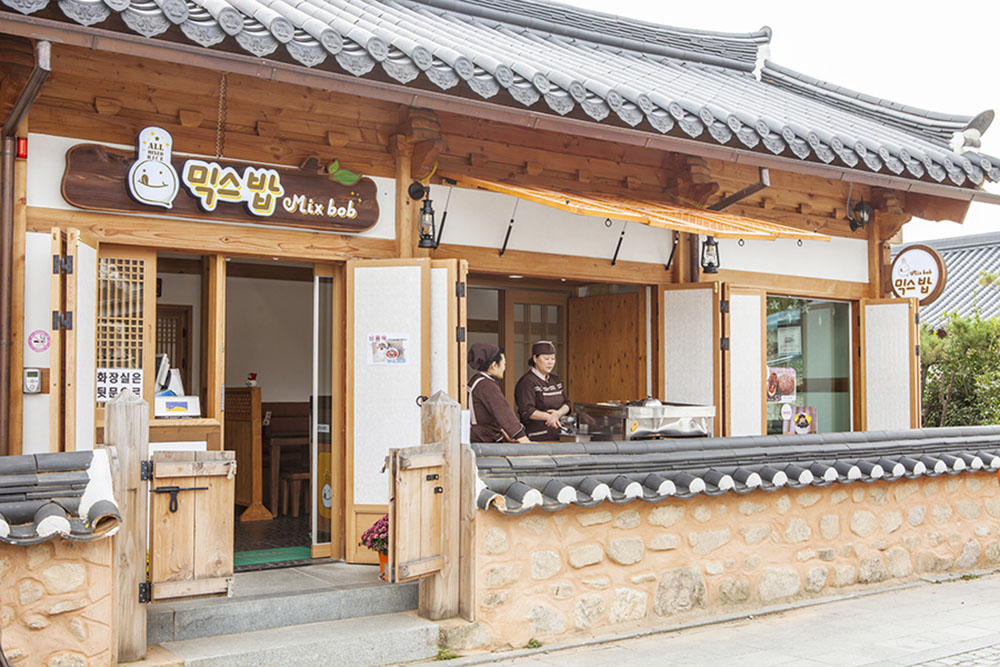
Mix Bob specializes in take-out Jeonju Bibimbap. The venue is certified by the Ministry of Agriculture, Food, and Rural Affairs to develop and promote healthy and tasty Jeonju Bibimbap dishes made from local ingredients.
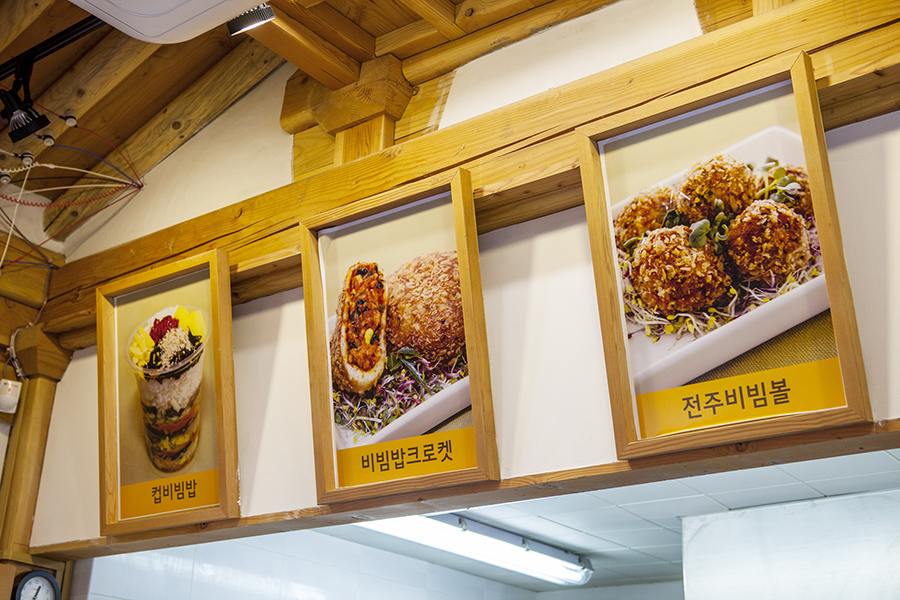
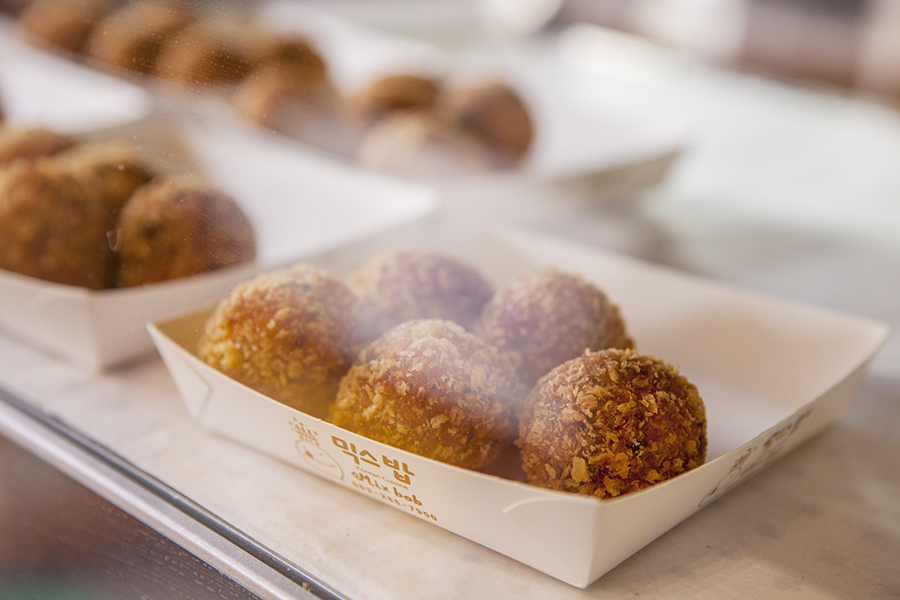
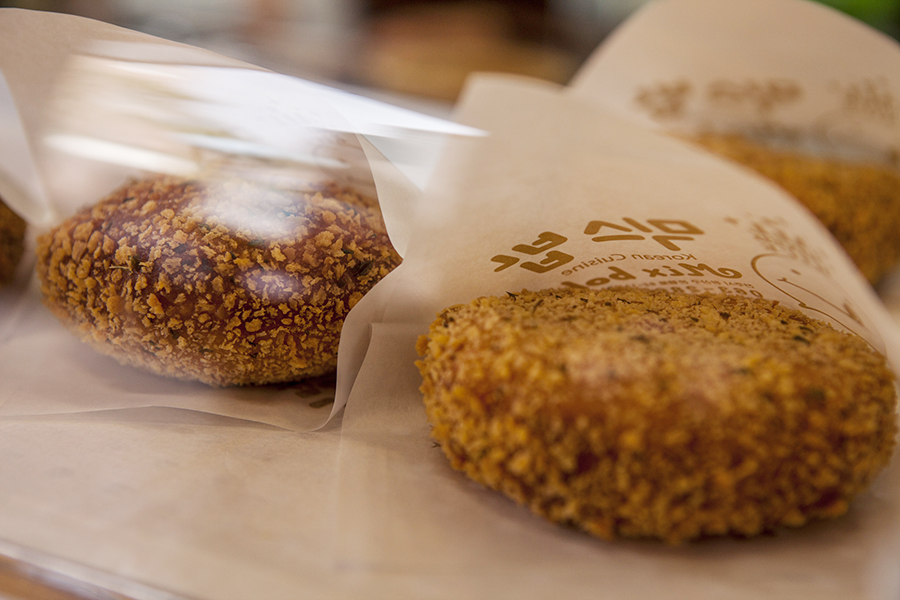
Mix Bob sells street food adaptations of Jeonju Bibimbap, such as “Bibim-bbang,” so that people can conveniently enjoy Jeonju Bibimbap outdoors.
<Mix Bob>
Address: 82-12, Eunhaeng-ro, Wansan-gu, Jeonju (Inside the Hanok Village, near Sungshim Girl’s High School)
Telephone: 063) 286-7900
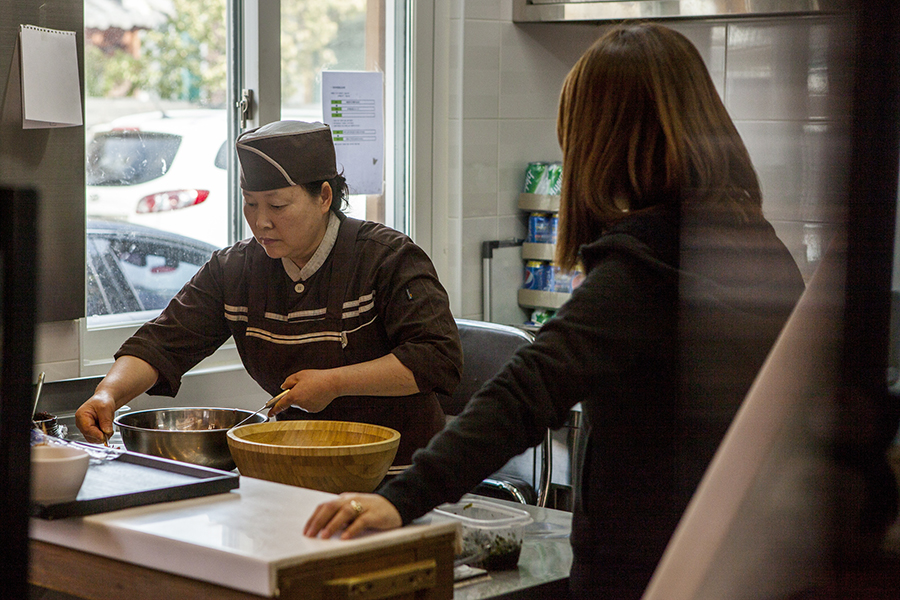
The lady at Mix Bob is preparing the Bibimbap I ordered.

Here are healthy, tasty, and convenient Jeonju Bibimbap menus from Mix Bob.
“Bibimbap Croquette” is a bread carrying Jeonju Bibibap inside. “Jeonju Bibim-Ball” is a ball-shaped fried Jeonju Bibimbap and potato mash with egg and bread crumb coating. “Cup Bibimbap” is colorful Jeonju Bibimbap prepared in a portable cup.
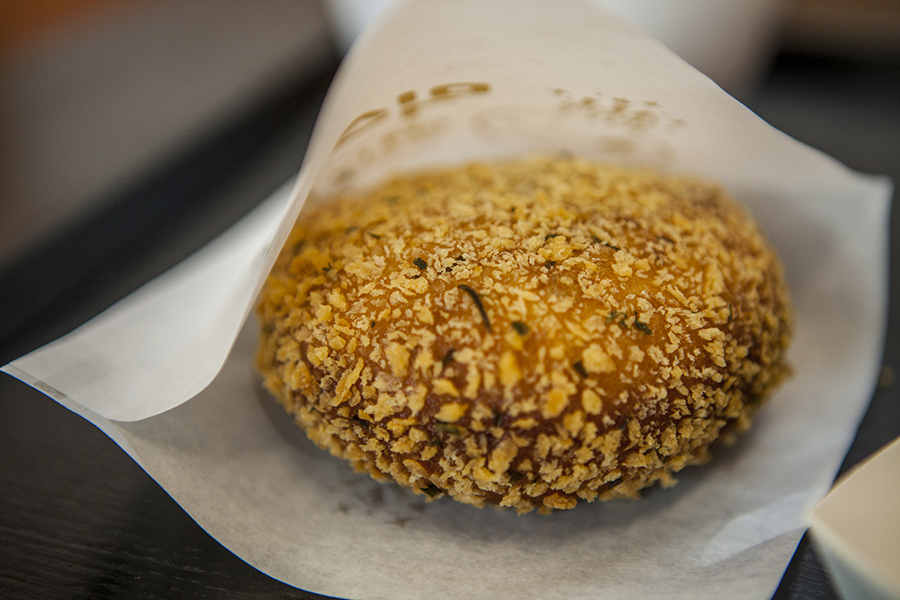
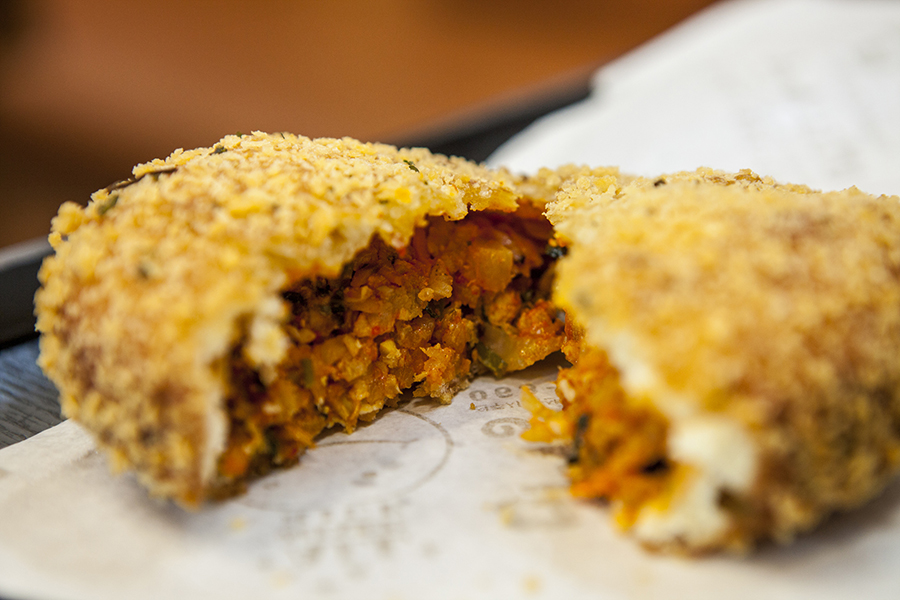
This is Bibimbap Croquette. Crunchy bread is holding Jeonju Bibimbap.
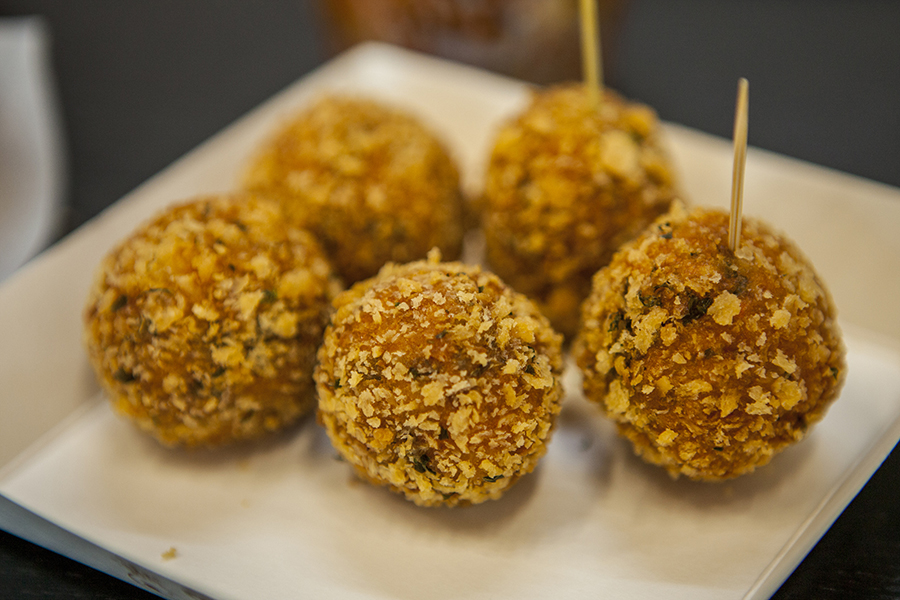
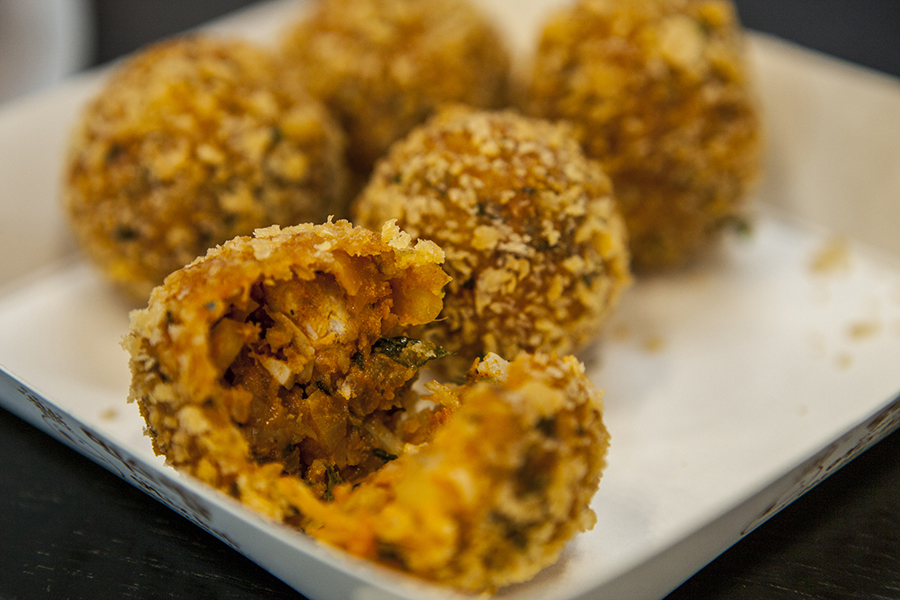
This is Jeonju Bibim-Ball. It’s convenient to carry around.
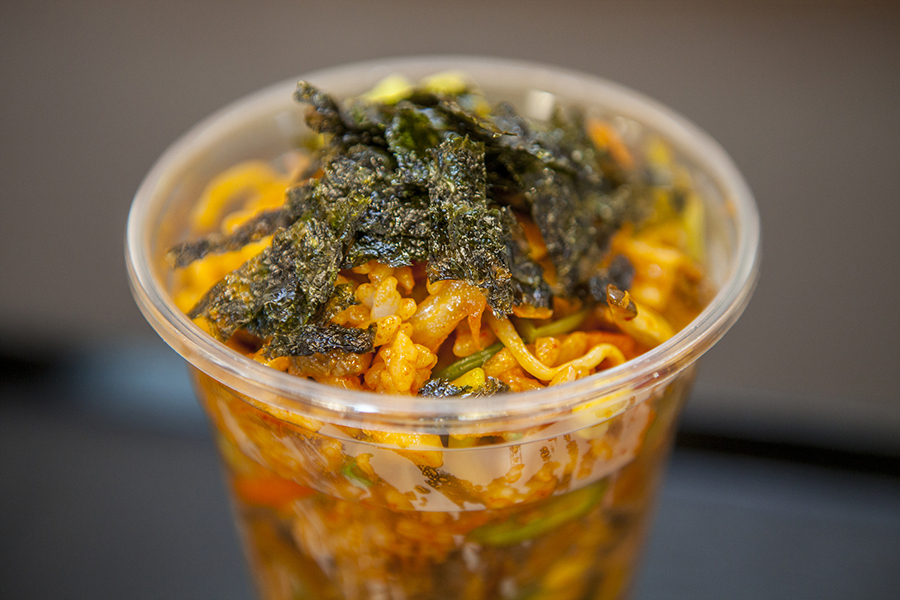
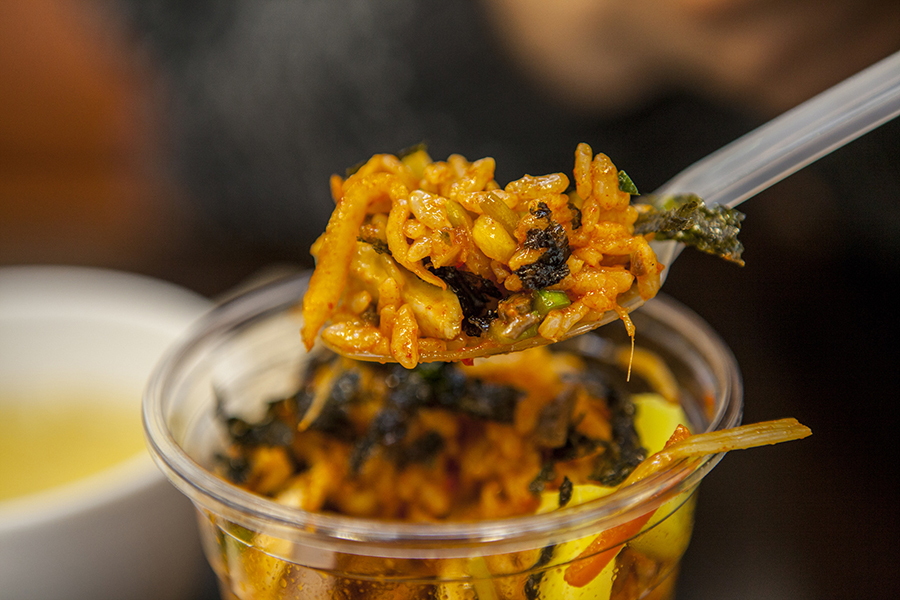
This is Cup Bibimbap which is quite portable. The rice and other ingredients are already conveniently mixed, but they are still very fresh.
2. “Jeonju Bibimbap Croquette” from Gyodong Croquette in Jeonju Hanok Village
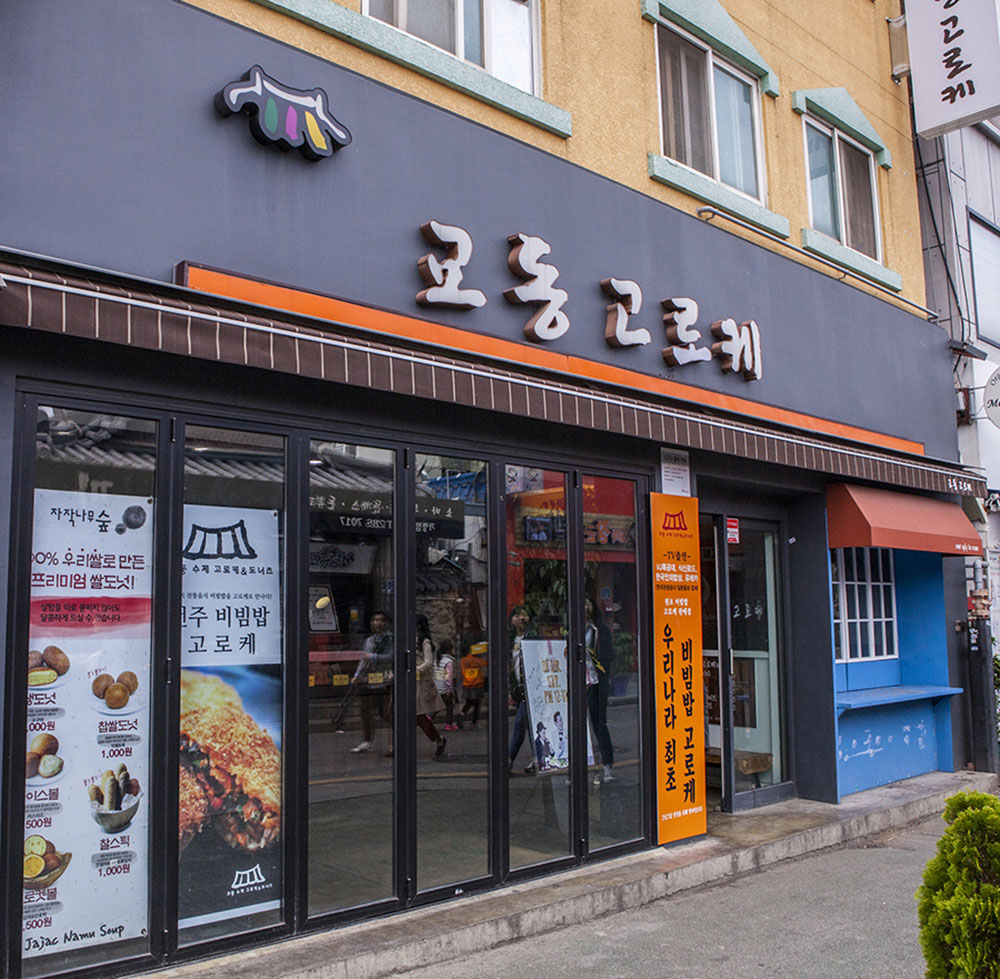
Gyodong Croquette is famous for croquettes with Jeonju Bibimbap inside, which is the first of its kind. The place has frequently appeared in television shows and popular to people visiting Jeonju.

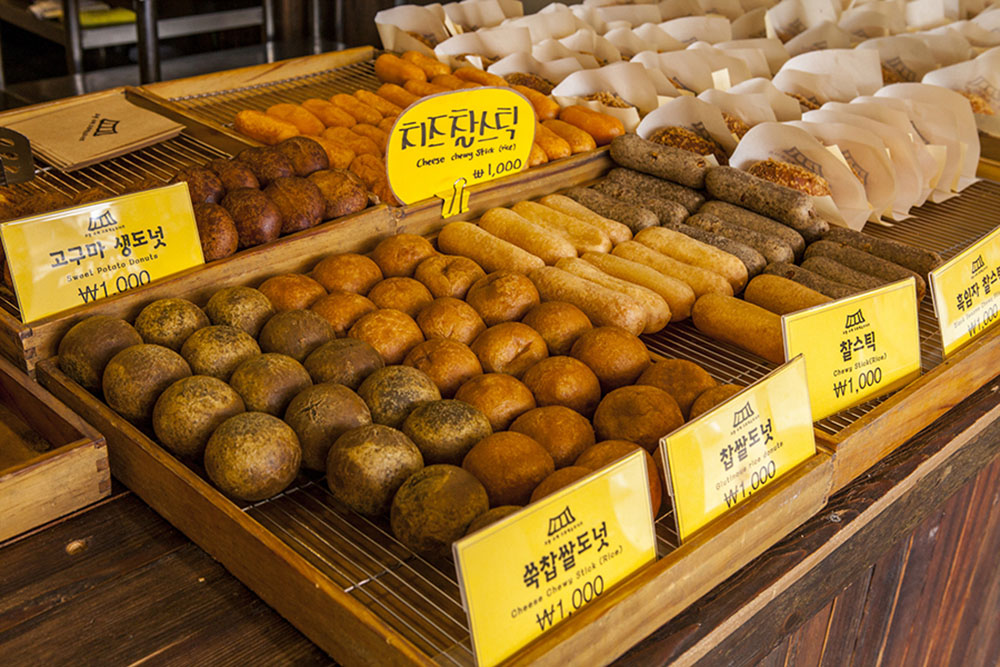
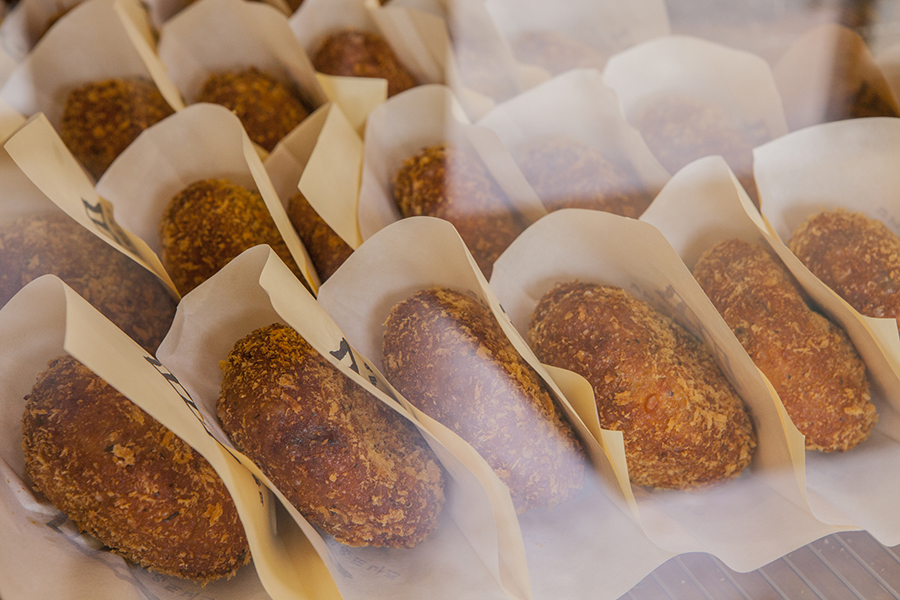
Inside its fried crust, the Bibimbap Croquette holds fresh Jeonju Bibimbap inside. I could see that the rice and other ingredients are intact and not broken or crushed.
There also were doughnuts and fried sticky sticks (called ‘chall-stick’). All the doughnuts of Gyodong Croqutte are premium products made from 100% Korean rice.
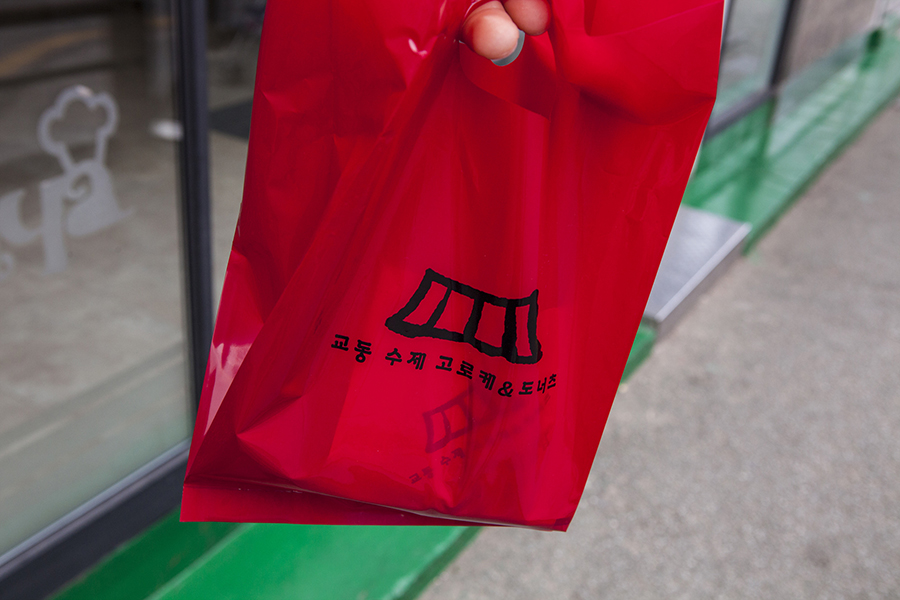
Gyodong Croquette is a take-out venue and the packaging is red. The symbol of this place is a roof of Hanok, traditional Korean house.
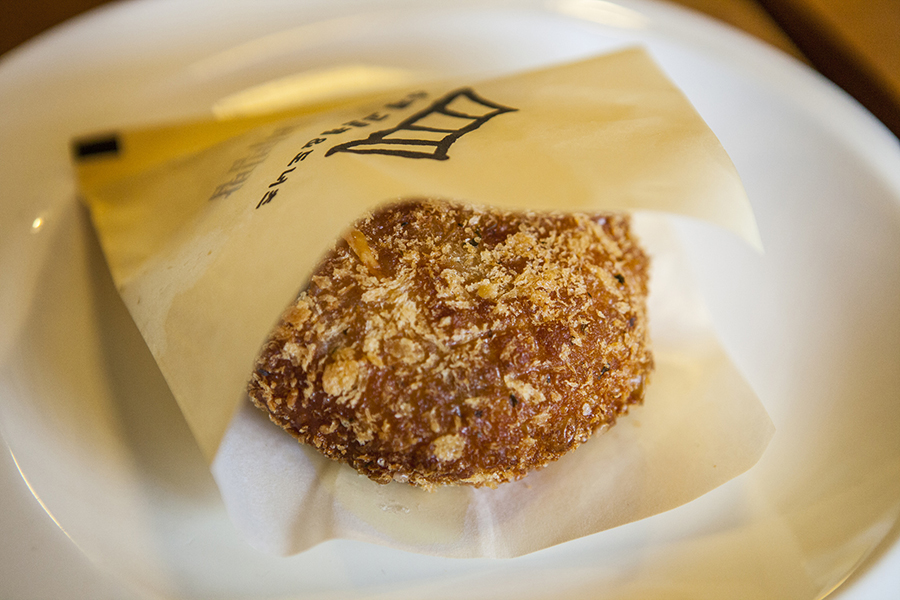
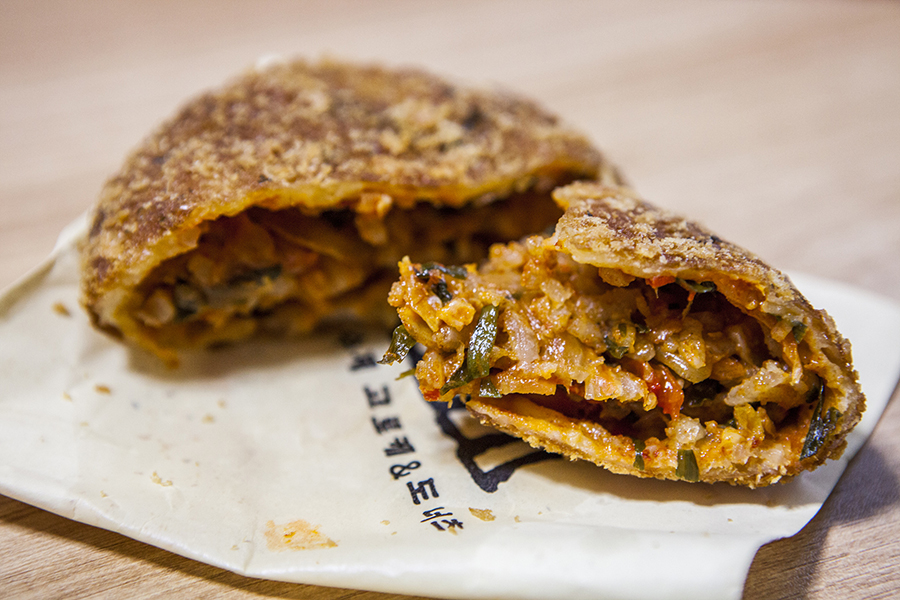
The Bibimbap Croquette has crunchy outside and moist inside, which is generously stuffed with Jeonju Bibimbap. This finger food is good enough to represent Jeonju Hanok Village.
3. “Bibimbap Waffle” from Doo Emo (Two Aunties) in Jeonju Jaman Mural Village
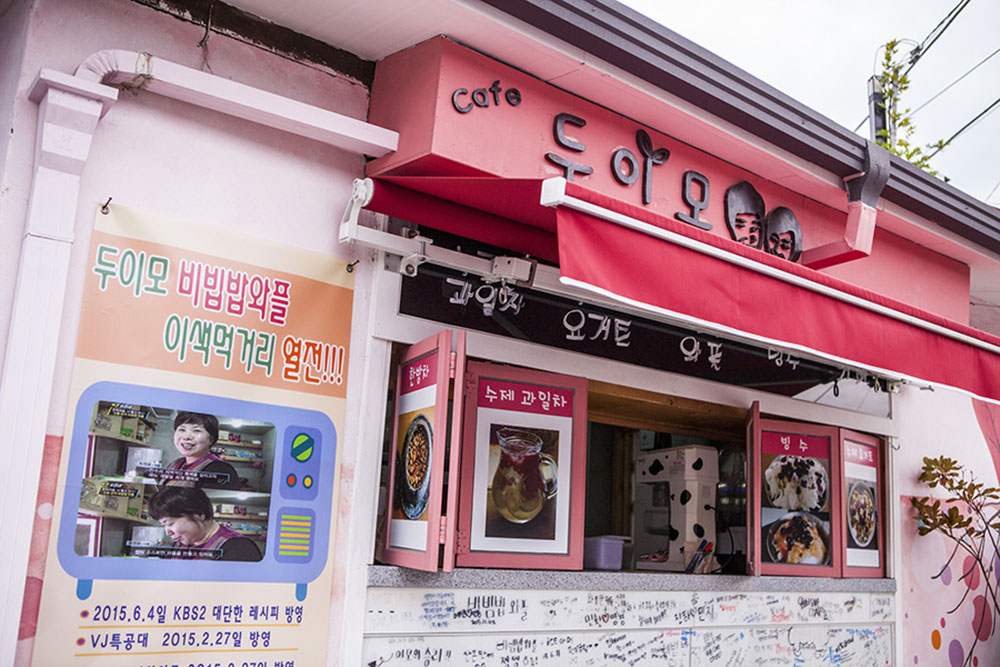
Doo Emo (Two Aunties) is a traditional tea café located in Jeonju Jaman Mural Village.
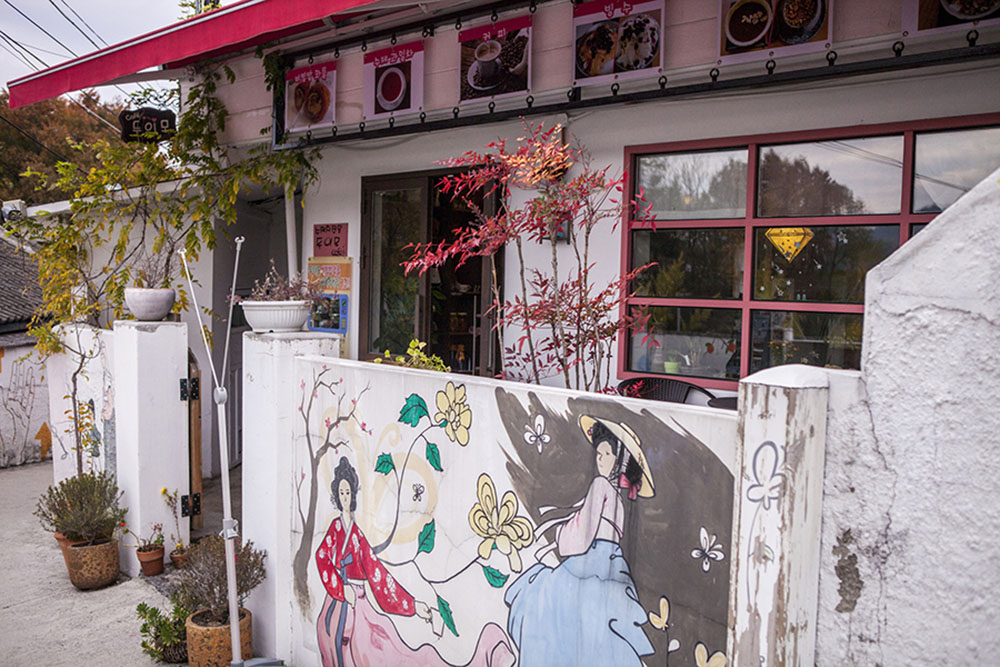
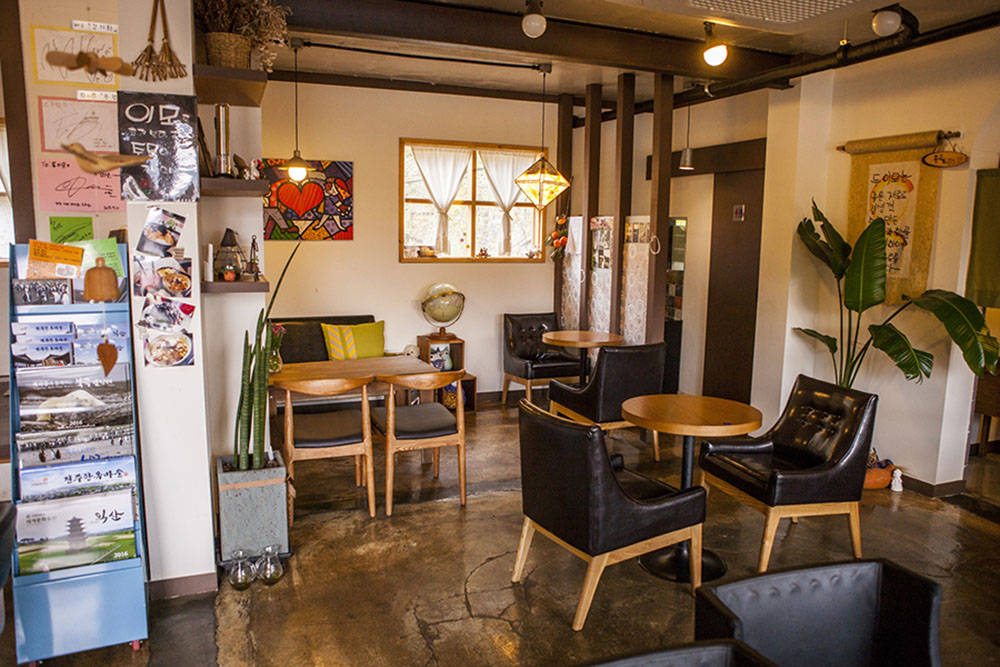
Doo Emo is popular among visitors for Jeonju Bibimbap Waffle, which goes very well with traditional teas. The café also boasts the charming interior.
Bibimbap Waffle is a patented product exclusively sold in Doo Emo. The waffle will satisfy your eyes and mouth.
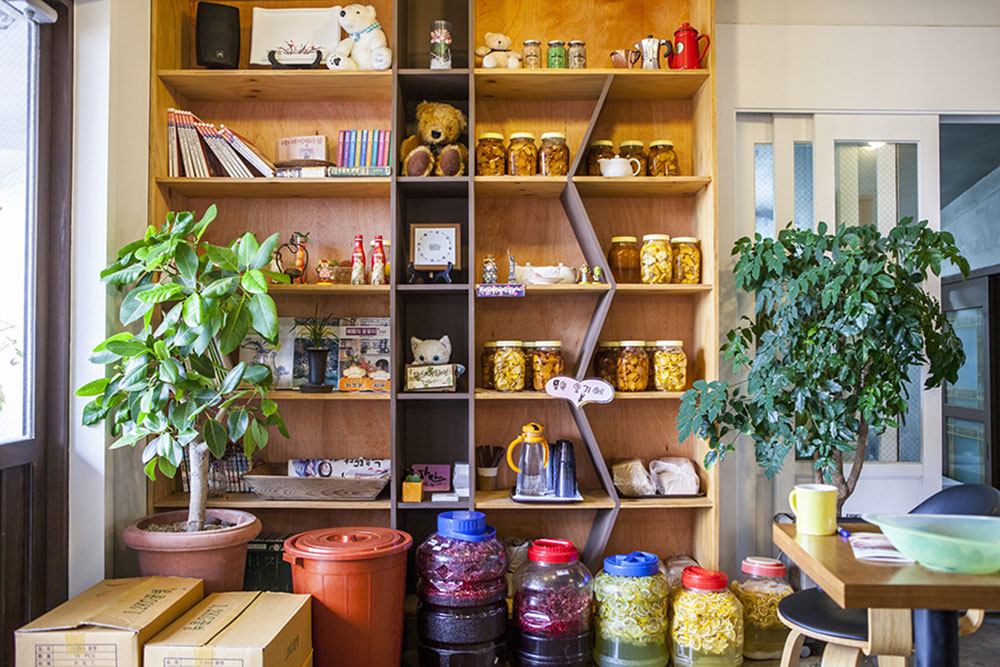
Apart from Bibimbap Waffle, Doo Emo is also famous for sweet home-made tea.
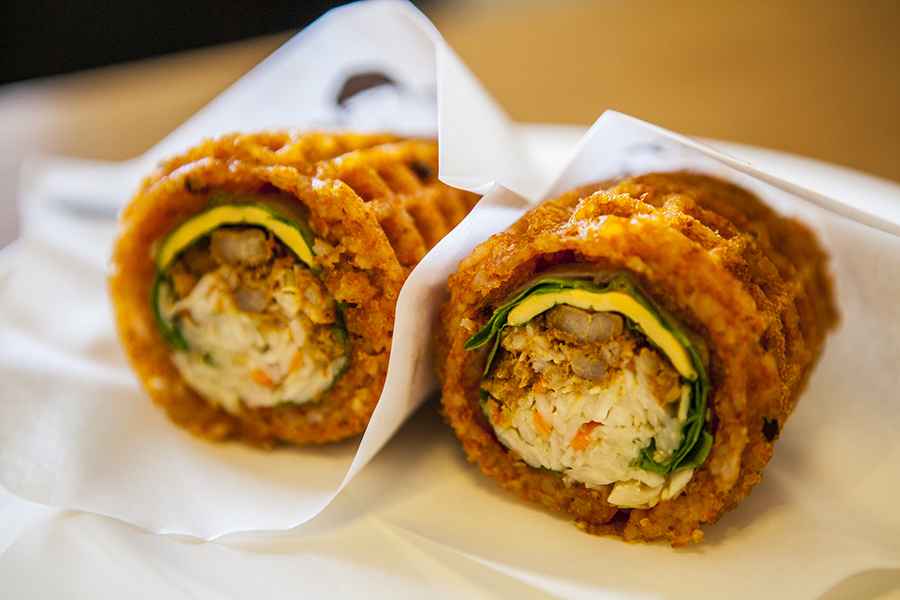
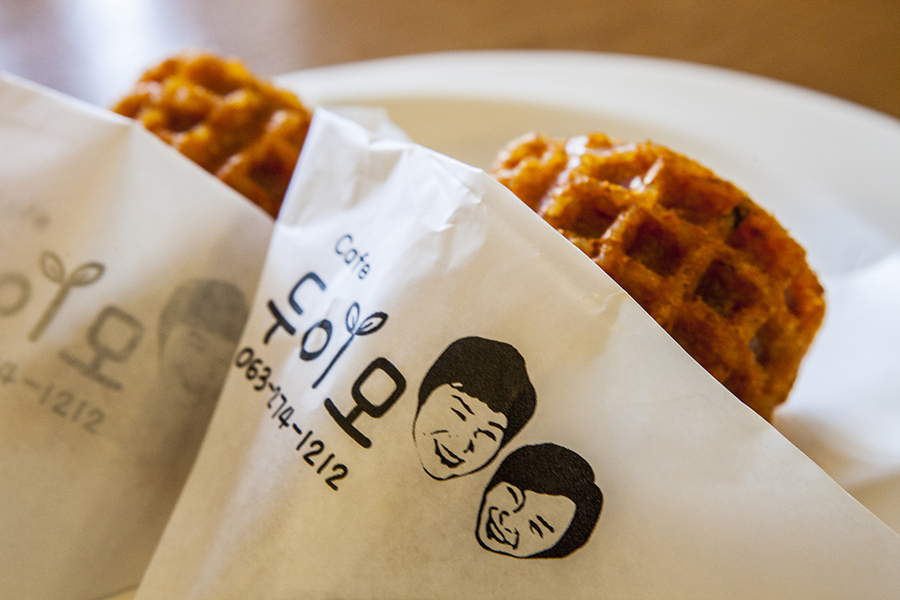
A good amount of meat and vegetables are wrapped in a rice paper, which is again wrapped in Bibimbap roasted in the waffle maker. Bibimbap Waffle is not only portable but is also enough for a meal as it consists of rice, meat, and vegetable altogether. This menu is crunchy, moist, and mouth-watering.

Bibimbap Waffle goes well with either warm traditional tea or iced coffee.
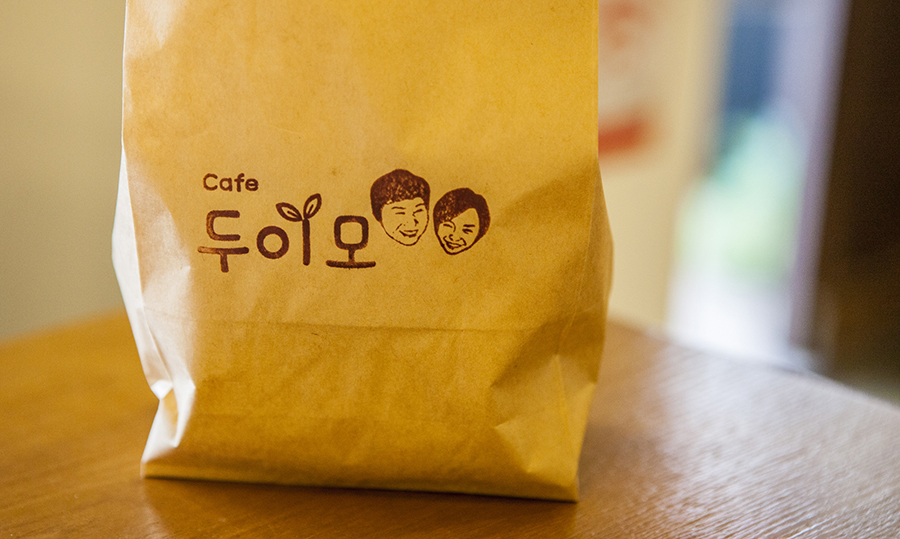
As a finger food, Bibimbap Waffle is offered in a small paper bag, so that you can conveniently fill your stomach while walking around the beautiful Jaman Mural Village.
4. “Bibim-bbang” from Jeonju Nambu Night Market
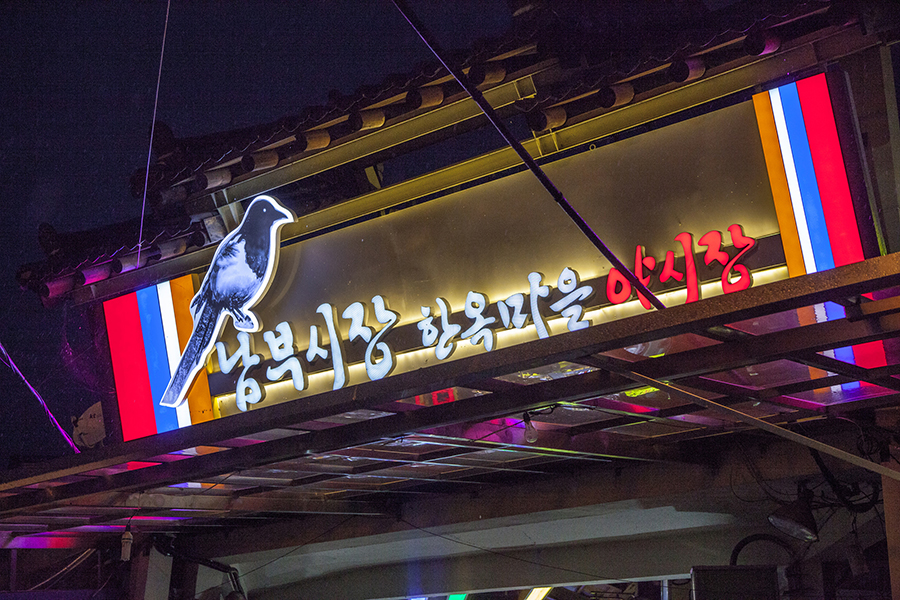
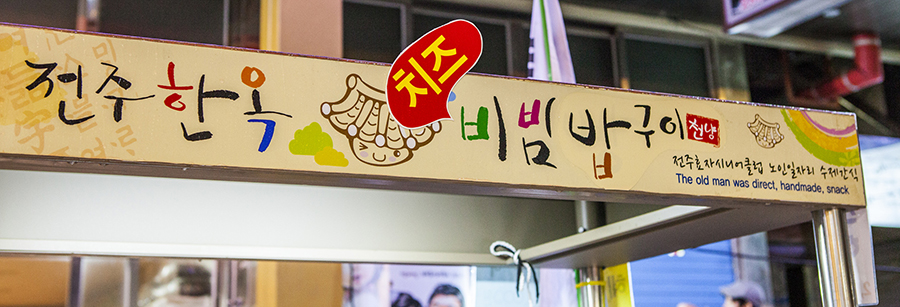
Bibim-bbang (‘bbang’빵 means ‘bread’ in Korean) is a portable-version of Jeonju Bibimbap.
To make Bibim-bbang, Jeonju Bibimbap coated with egg is pressed and roasted in the steel frame. The frame shapes Bibim-bbang into Hanok (traditional Korean house), symbolizing Jeonju. Bibim-bbang has cheese inside, so it’s best eaten while warm to enjoy the cheese stretch.
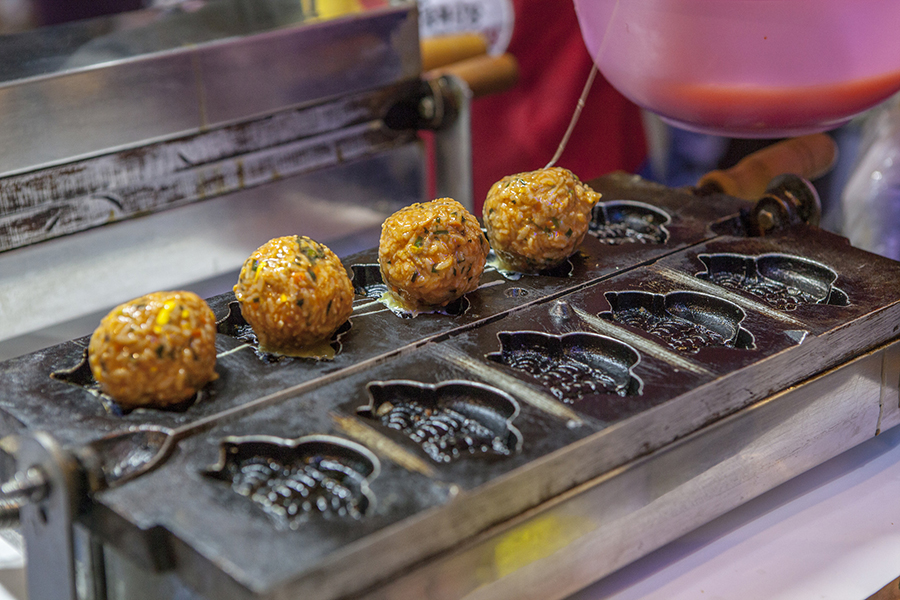
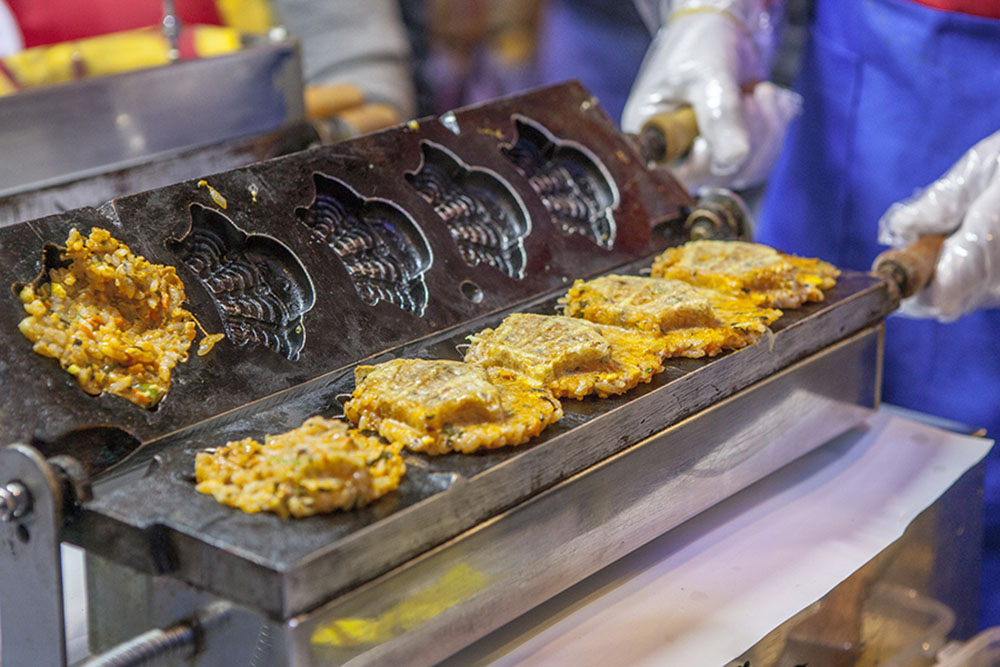
There was a long line of people waiting to buy Bibim-bbang. Two ladies were busy preparing Bibim-bbang.
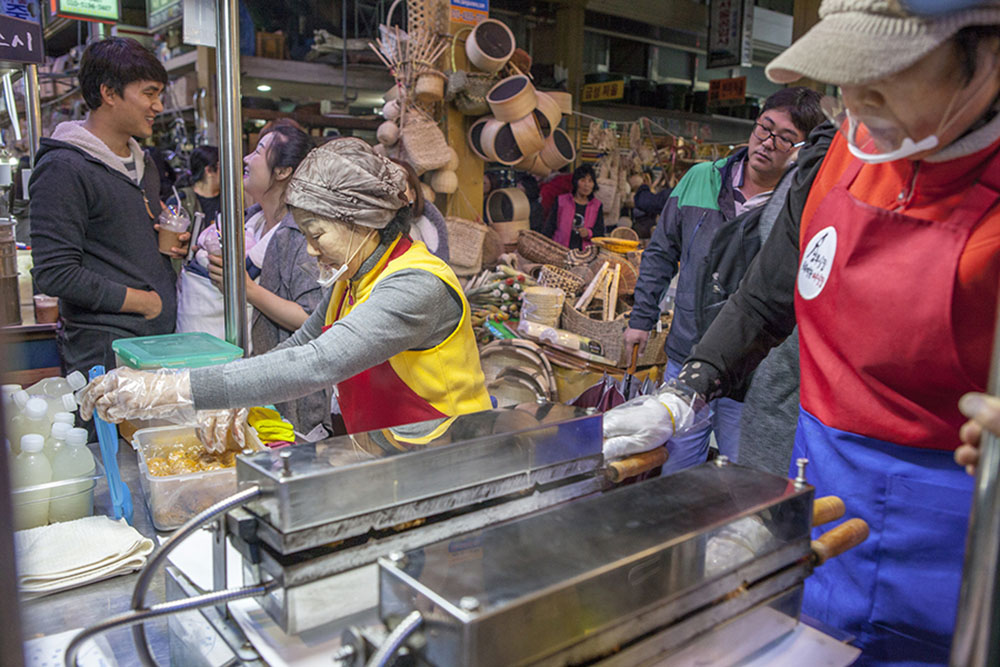
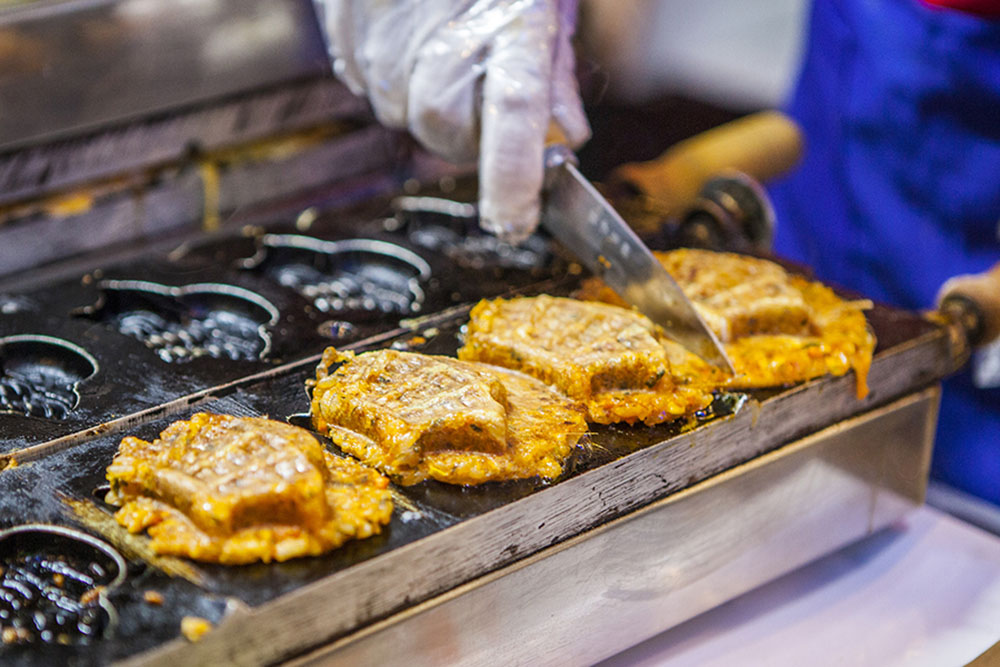
Thanks to this paper bag, it was very convenient to enjoy Bibim-bang while walking around the night market.
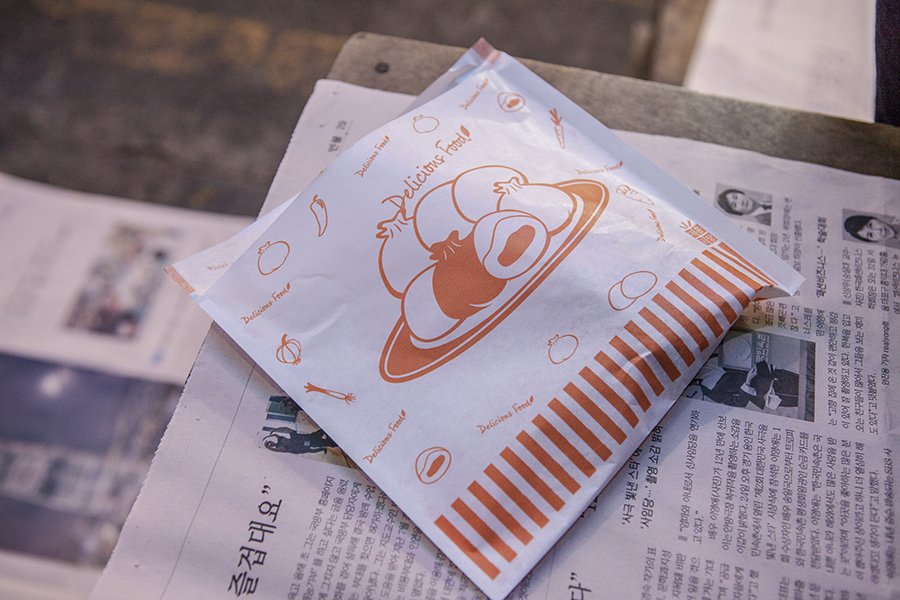
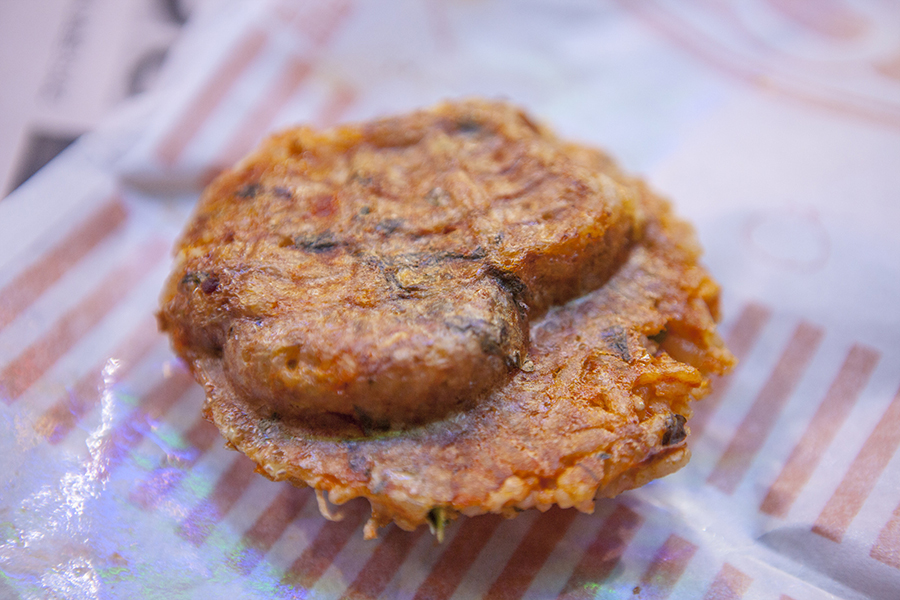
Visit Jeonju to find out how Bibimbap is undergoing transformation. At different attractions of Jeonju, from Jeonju Hanok Village and Jaman Mural Village to Nambu Night Market, you will find a variety of creative adaptations of Jeonju Bibimbap.


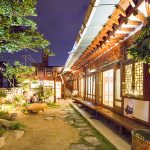




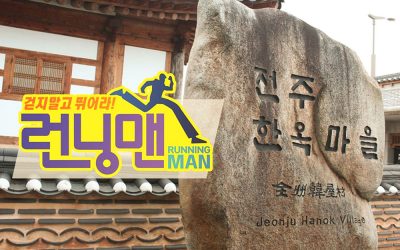
Recent Comments